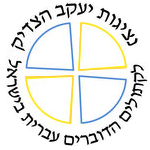Population of the State of Israel eve of 5777

The Central Bureau of Statistics published the data today, Tuesday, September 27, 2016. Since Rosh HaShana last year the population of Israel has grown by about 173 000 people – a growth of about 2%, similar to the growth in the past few years.
From the data of the Central Bureau of Statistics it is shown that the Jewish population of the State of Israel numbers 6 419 000 people, accounting for 74.8% of the population. The Arab population numbers 1 786 000 people (20.8%) and the others – non-Arabs Christians, members of other religions and those without any religious classification – number 380 000 inhabitants.
The rate of growth for the whole population in 2015 was 2%, similar to the rate of growth over the past decade. The Central Bureau of Statistics pointed out that this was the same rate of growth in the 1980s, which were the years of the lowest rates of immigration. In the 1990s, during the period of highest rates of immigration from the former Soviet Union, the growth rate was on average 3% per year.
The population in Israel is considered relatively youthful in comparison with Western countries. In 2015, the rate of children up until 14 years old in Israel was 28.3%. In addition, the rate of those 65 years old and older continued to rise and made up 11.1%.
The proportion of those 75 years and older in the population also grew moderately over the years: 4.9% in 2015 as compared to 3.8% in the beginning of the 1990s. The proportion of those who are 75 and older in the Jewish population is relatively higher, 5.9% in 2015 as compared to 4.4% twenty-five years ago.
It is also revealed that Israelis do not rush to get married. The Central Bureau of Statistics found that the Jewish population tends to delay marriage, leading to a relatively high rate of bachelorhood among those who are 25 to 29 years old. 62.7% of men and 45.8% of women in this age group were unmarried in 2014 as opposed to 54% of men and 33.3% of women in this age group in 2000. Among Muslims, 47.1% of men and 19.4% of women in the age group of 25-29 were unmarried as opposed to 35.7% of men and 23.2% of women in 2000.
What about those that do choose to get married? 50 797 couples got married in 2014, among them 73% Jews and 23% Muslims. 44 412 got married for the first time in this year (87%). The average age among all the grooms who got married for the first time in 2014 was 27.6 – 27.9 among Jewish grooms and 26.4 among Muslim grooms.
Furthermore, the Central Bureau of Statistics published that 178 723 babies were born in 2015, about 1.3% more than in 2014. Among them, 74% were born to Jewish mothers and 23% to Arab mothers. The age of the woman at the time of giving birth for the first time is also rising: from 25.1 in 1994 to 27.6 in 2015. The trend of rising age at the time of first birth is true for all the religious communities.
The proportion of people born in Israel in the population has been on a constant rise since the establishment of the State of Israel. At the end of 2015, those born in Israel constituted 75.9% of all Jews as opposed to only 35% at the time of the establishment of the State.
And where do we live? About 40% of the population in Israel lives in the center of the country, that is in the regions of the center and in Tel Aviv. About 50% of the Jewish population lives in the center of the country whereas about 60% of the Arabs live in the north.
Among the eight biggest cities in Israel – and in each one there are more than 200 000 residents – Netanya had the largest rate of growth in 2015 (2.7%). In Haifa, growth was only 0.7%.
Read the report here
These statistics do not include the numbers of migrant workers and asylum seekers. For these numbers see here











 Ordinations of the New Bishop for the Latin Patriarchate
Ordinations of the New Bishop for the Latin Patriarchate New Bishop in the Latin Patriarchate
New Bishop in the Latin Patriarchate Midnight Mass in Bethlehem 2023
Midnight Mass in Bethlehem 2023 Coming Tuesday: The Day of Fasting For Peace
Coming Tuesday: The Day of Fasting For Peace Pizzaballa: Appointment as Cardinal Shows Jerusalem’s Vocation to Dialogue
Pizzaballa: Appointment as Cardinal Shows Jerusalem’s Vocation to Dialogue Archbishop Pierbattista Pizzaballa Elevated to the Rank of Cardinal
Archbishop Pierbattista Pizzaballa Elevated to the Rank of Cardinal Shooting in Christian School in Nazareth
Shooting in Christian School in Nazareth